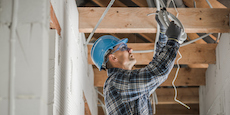Electrical connection requests
To add electrical service to a location that doesn't have an electrical connection yet, you'll need to request an electrical connection.
We offer two main types of electrical connection services. Depending on your project complexity, you'll need to apply for either an express connection or a design connection. Find out more below.
On this page:
- Before you begin
- Express connections vs. design connections. What's the difference?
- Which connection type should you apply for?
- Glossary
If you're moving to an address that has an electrical connection, go immediately to start, stop or move your service.
Before you begin
Before requesting an electrical connection, start by discussing your electrical needs with an electrician, electrical consultant, or developer who's experienced with the process. It's important to have a professional guide you at this stage and, if you're planning a service upgrade, to get the right data and ask the right questions.
The technical requirements of your project will determine whether it's considered an express connection or a design connection. These include:
- The distance between your project location and the existing BC Hydro infrastructure that supplies electricity.
- The amount of electricity you need.
- Whether there's sufficient electricity to support your needs.
An express connection is:
- A connection that doesn't require addition or modification to the distribution system to provide the service.
- The quickest way to get an electrical connection installed.
- A connection that can be completed for a standard charge and fee.
A design connection is:
- A more complex, multi-phase electrical design project that requires our design team's technical expertise to design, plan and implement.
- A project that includes installing, replacing, or moving our infrastructure including power lines, poles, transformers, service boxes or fuses to help you get connected.
- A project that may require an extension fee to install the infrastructure.
Please work with your electrician, electrical consultant or developer to answer the following questions. If you answer "yes" to one or more of the questions below, you should likely proceed with an express connection request.
Otherwise, your request should likely be handled as a design connection project instead.
Service location
- Overhead: Is your service location within 30 metres from an existing BC Hydro pole?
- Underground: Is there existing underground BC Hydro infrastructure (service box or transformer) near your property?
- Will the meter be located on the exterior of the structure or connection point? (Not in a meter room)
Service size
- Does your request require an electrical connection that is 400 Amps or less?
- Does your request require either a single-phase 120/240 V or 120/208 V?
Select a connection type
Select a connection type to see the associated process, timeline, costs and more.
Manage your requests
Electrical connection requests are handled online through MyHydro, available on desktop and mobile devices. If you don't have a MyHydro profile yet, create one first.
Log in to submit requests, check project status, share documents and more.
For guidance, see how to manage a project using MyHydro [PDF, 828 KB].
Glossary
Every BC Hydro pole has a tag with an identification number. A pole tag could have a seven-digit or 14-digit identification number. To read a 14-digit identification number, use the first eight numbers from the top row (starting from the left) and the first six numbers from the bottom row (starting from the left).
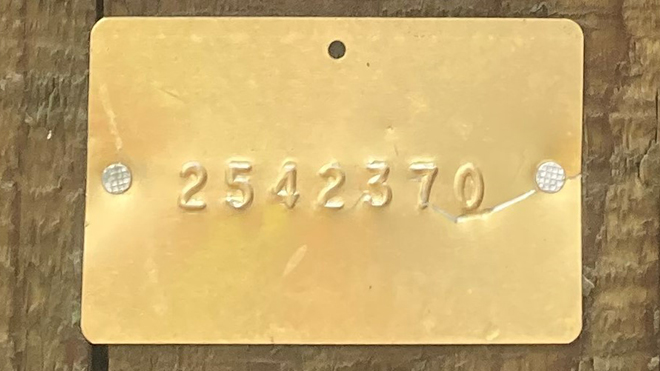
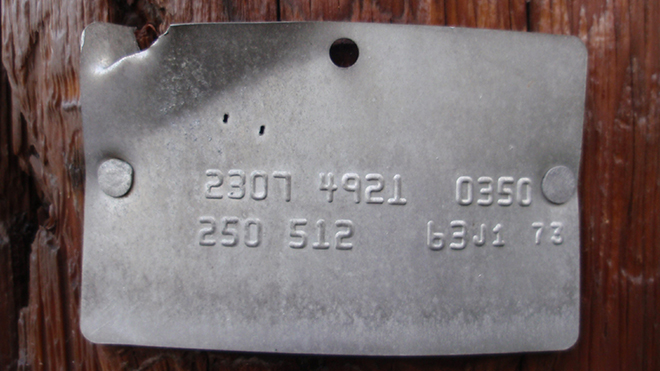
Equipment that converts electrical energy from one voltage, through electrical induction, to another voltage. Generally, we use step-down transformers to convert our distribution system voltage to levels that can be safely used in homes and buildings.
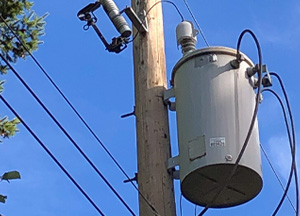
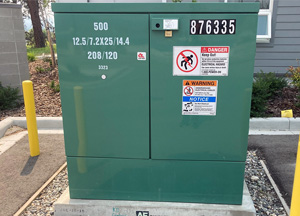

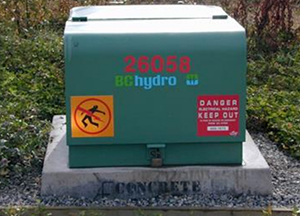
Power lines that carry the high voltage of our distribution system after it leaves the substation. Larger services may connect directly to our primary distribution lines for service.
Power lines that connect commercial and residential customers to our system after a transformer lowers the voltage from our primary distribution line.
A non-energized tensioned cable with a yellow guard attached to a pole and anchored into the ground.
A room in a building housing electrical equipment, such as meters. Rooms containing BC Hydro's equipment have access provisions and technical requirements you'll need to incorporate into your project.
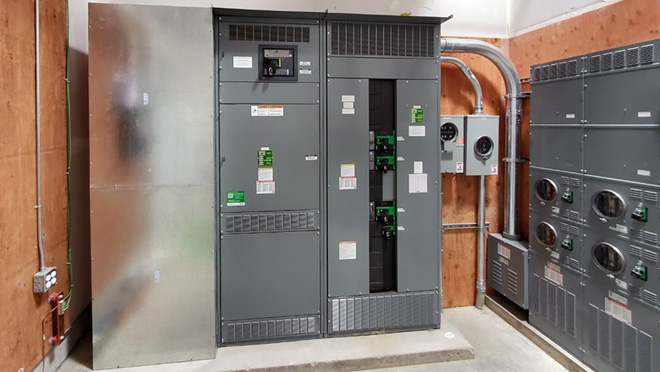
Single-phase power is a type of electricity supply that uses one alternating current (AC) voltage. It is commonly used in homes and small businesses to power lights, appliances, and small equipment.
Three-phase power is an electricity supply system that uses three separate AC voltages working together. It delivers power more efficiently and steadily, especially over long distances. It's typically used in large buildings, commercial operations, and industrial settings
The combined voltage and amperage of your request. Larger services have greater impacts on our system and may have increased requirements and costs.
Connects your electrical system to our secondary distribution system, most often at poles, transformers or service boxes.
Electrical equipment installed on or between poles, including overhead transformers, switches, regulators, capacitors, conductors and guy wires. Many of our poles are jointly owned with TELUS and also have communication cables attached below BC Hydro's electrical equipment.
Electrical equipment installed underground or at ground level. Includes underground cables, junction boxes, service boxes, low profile transformer, pad-mounted transformers, chambers and vaults.
In the case of a work with, both the BC Hydro crew and the electrical contractor are required to be on site at the same time in order to complete work. A one-trip work with requires that the crew attend site alongside the electrician just one time. In a two-trip work with, the crew disconnects electrical power in the morning and reconnects later the same day. This allows the electrician to complete work while the area is de-energized.
